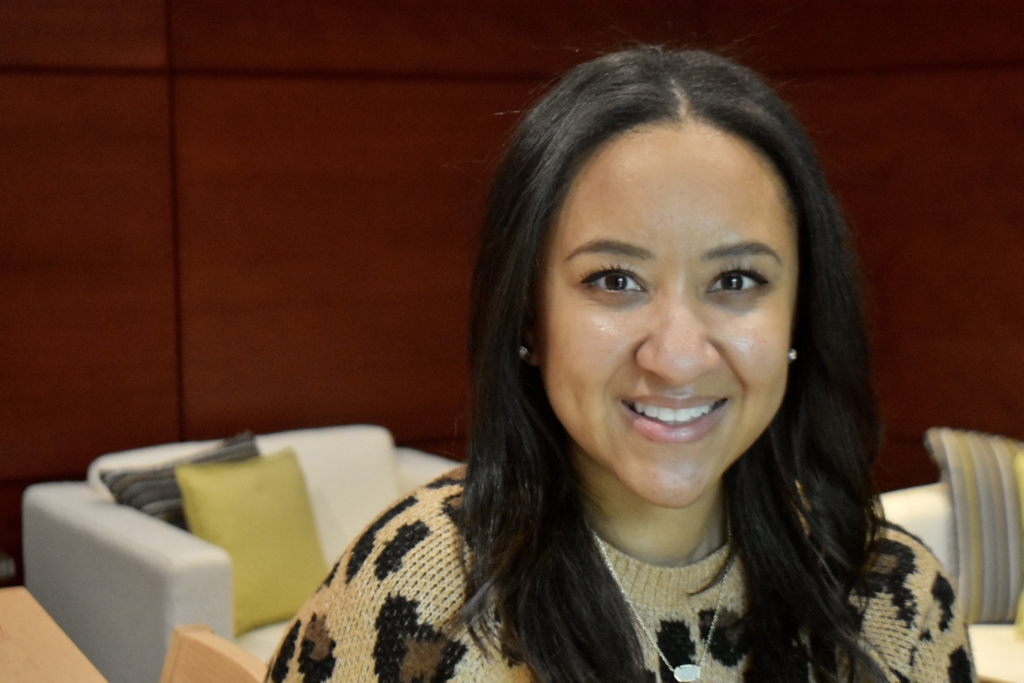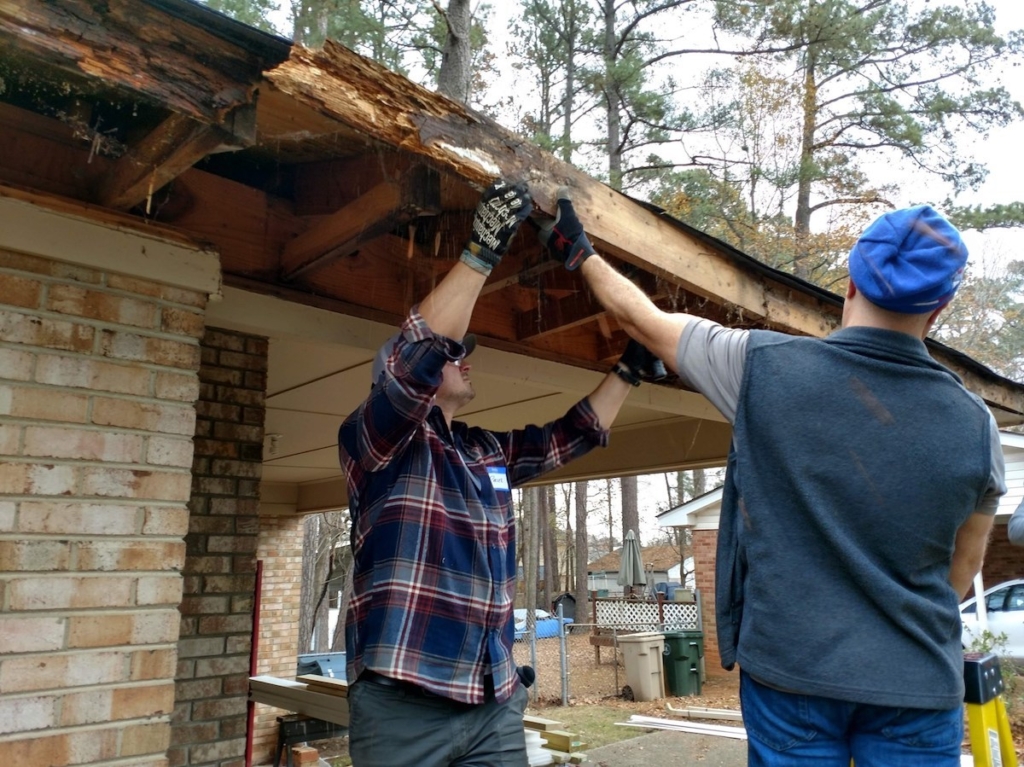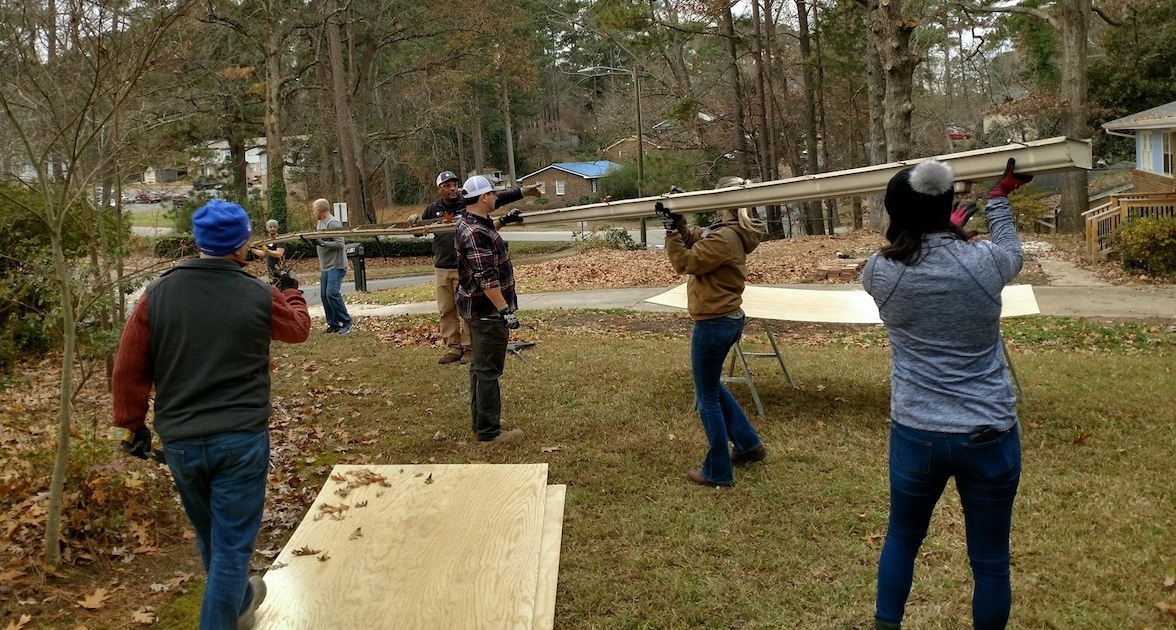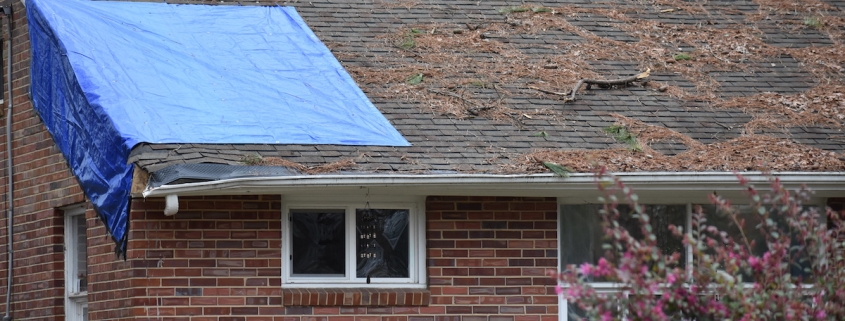Housing Rehabilitation Program Creates New Approach to Affordable Housing
Cary, NC — Cary’s latest Housing Rehabilitation Program, launched on February 10th, provides critical home repairs for low-income and senior homeowners at no cost to them or their loved ones.
With eye-catching, multi-million dollar re-developments spreading and gaining momentum in Cary, there also comes the other side of the housing spectrum, the aging homes in Cary.
“We have really beautiful homes here in Cary that have great character. We don’t want people to lose those homes. That’s really what we’re trying to focus our rehabilitation efforts on,” said Housing and Community Development Manager, Morgan Mansa.
Whether a person’s choice is to buy a new house or to see the character maintained in an older house, Mansa says it’s all about making sure both options are viable for all of Cary’s residents.
“This program is a way to ensure that choice,” said Mansa.
The New Vision

Morgan Mansa, Housing and Community Development Manager with the Town of Cary.
The typical model for housing rehabilitation programs in other areas, and even in Cary’s past, was strictly loan-based. Under this type of program, if a senior home-owner sought assistance through a rehab program and they passed away before completing their loan payoff, that obligation would fall on the heirs of the home, often the children who just lost a parent.
After seeing this issue time and time again in other areas she’s managed, Mansa developed a new way of going about this program in Cary.
“Since I was continuing to hear this, I knew there were people out there in need and we were not filling that gap. So, in talking with our team here, we asked ourselves how we could adjust the model to make it accessible to more residents with limited means,” said Mansa.
The new plan is grant-based instead of loan-based, meaning those who qualify for the program’s assistance can apply and have their homes repaired at no cost to them whatsoever. To make it all happen, money had to be allocated from the town’s general fund.
“In the first year, we are projecting that we’ll spend about $300,000 through this program,” said Mansa. This total will be spread far as there is a limit of $12,500 in grant money per household.
This number was based on the volume of applications from prior years. Though, Mansa says that higher than expected interest from residents in just the last few weeks may lead to a future conversation with the town council for more funds.
“This doesn’t mean that someone’s going to get a completely remodeled kitchen or something like that. It’s more like if it’s the middle of winter and your heating no longer works, then we want to come in and make these repairs and we’re not asking for you to pay anything back,” said Mansa.
The goal of the program’s first year is to provide repairs to 20 homes. With the previous program model, the town served an average of 5-8 homes in that time frame.
How is this increase possible? A partnership with three local non-profits, that’s how.
A Community-Based, Community-Assisted Effort
In previous rehab program efforts, the town hired a handful of general contractors for the work, and in doing so had to juggle many estimates and administrative paperwork. Now, with a newly forged partnership, the focus can shift to the truly important piece of this, serving the community.
The three non-profits working with the town on this program are Rebuilding Together of the Triangle, Habitat for Humanity of Wake County and Resources for Seniors.
“Each of them has a different area of expertise, so depending on what the need is on the home, that organization ends up taking on that project and doing the work for them,” said Mansa.
Rebuilding Together for the Triangle is the first organization to contact applicants and visit their home to access its repair needs. They bring that knowledge to the team and the delegation process begins there.
Resources for Seniors is an organization with the means to make homes more handicap accessible and Habitat for Humanity of Wake County has a strong base of volunteers who are ready to do some heavy lifting.
Mansa described the partnership as a great way to empower these non-profits by giving them funds to do these much-needed repairs.
“They are mission-driven and they care about our residents,” said Mansa.
Eligible Repairs

Volunteers with Rebuilding Together of the Triangle making exterior home improvements
Some of the repairs that can be made through the Housing Rehabilitation Program include:
- Repairs or upgrades to improve energy efficiency
- Emergency repairs, such as roof or furnace replacement
- Exterior repairs like new siding, new windows, and porch repairs
- Repairs to items that effect the homeowner’s health and safety
- Repairs to make the home accessible for people with disabilities
- Repairs to help resident age in place
- Treatment of lead-based paint or asbestos hazard
Repairs that cannot be made include:
- Repairs related to fire/smoke damage
- Purchase of new appliances or tools
- New construction
- Luxury improvements
“At its core, the Housing Rehab Program is our way of helping residents with code violations and beautification, but if there’s something in the interior of your home that people don’t see from the outside, we care about your quality of life, so we encourage you to apply for funds through the program. Outside, inside, even if it’s a simple doorway expansion,” said Mansa.
Due to the age of homes in Cary, much of the repairs will fall within the Maynard loop. To find out if you qualify to apply, see the program’s webpage.
Future Goals of the Program
When describing the ultimate goal of the project, Mansa says the town doesn’t want it to stop at repairing a single house on the block. Instead, they hope it becomes a neighborhood effort.
“If neighbors see that people are volunteering to help out their neighbor, maybe they’ll feel inspired to plant flowers, do some streetscapes and different things like that,” said Mansa.
Depending on where the future takes the program, Mansa says a long-term goal may be having the town consider additional grant programs that can bring neighbors together and improve more than just one home.
“We want this to be a vehicle to really be intentional about maintaining character here,” said Mansa.
Even in the first few weeks of the program getting off the ground, Mansa says other municipalities have reached out about the program wanting to know more about the new model.
“They have models that operate very similar to how we used to operate which can be difficult to manage. It would be really neat to see this become more of a regional approach where other jurisdictions can adopt this model,” said Mansa.
Volunteers Needed

If you, either as an individual or a larger group, want to be the hands of this operation, Mansa says there are always opportunities for volunteers, especially in the summer and fall months of 2020.
If you have an interest in helping out, contact Mansa by email, morgan.mansa@townofcary.org.
Story by Ashley Kairis. Volunteer photos courtesy of Rebuilding Together of the Triangle.




Creative approach. Adds a nice balance to all the new construction!
Once again, Cary leads the way. Kudos to Morgan Mansa!